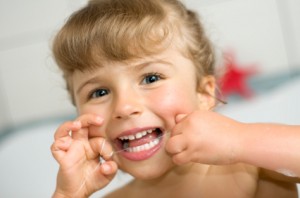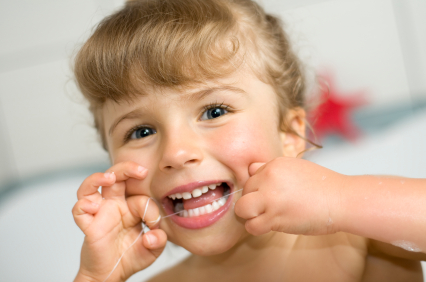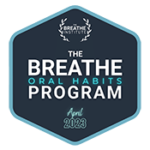Between the Lines: Flossing for Children
Kids aren’t usually a fan of sticking things between their teeth that isn’t candy or some other sweet treat, but, when it comes to flossing, developing a daily habit is vital in their oral health. Flossing is an important step in removing all the food particles from teeth where a toothbrush can’t reach, reducing the risk of gum disease and tooth decay. Studies have discovered that 30-35% of all cavities in children occur between the teeth, particularly the baby molar teeth. While you may be wondering how you could possibly get your child to start flossing, we would like to fill you in on the basics of flossing your child’s teeth and how you can introduce it into their daily routine and make it a positive experience.

When Should My Child begin Flossing?
For starters, children need to have their teeth before they can begin to floss. Once they’ve got the hang of brushing, teaching them how to floss is an important follow-up. When you introduce your child to brushing and flossing, they should be assisted by a parent or adult until the age of 4-5 years old, then supervised by an adult until they are 8-10 years old. Studies show that children are not coordinated well enough to brush and floss their own teeth until they can successfully tie their own shoe, which usually falls at the same age of 8-10 years old. Every child, however, is different and these numbers can vary. The American Academy of Pediatrics recommends that flossing should begin when the teeth begin to touch, typically between 2 and 2½ years of age. Some children may only need a few back teeth flossed while others may need flossing between each tooth, depending on the amount of spacing between teeth.
How Do I Floss My Child’s Teeth?
As important as daily flossing is, it is even more important to floss correctly. Flossing should be done once a day, preferably after dinner with the evening brushing, this way, all the food particles from the day are removed. You will need to floss your child’s teeth until they are capable of doing a thorough job on their own. Here are some steps to follow for flossing your child’s teeth:
- Wind about 18 inches of floss around your fingers. Most of it should be wrapped around the middle fingers of both hands.
- Use your thumbs and forefingers to lightly hold and guide about one inch of floss between your teeth.
- Use a back and forth motion to guide the floss between their teeth
- Tightly hold the floss and curve it into a C-shape against one tooth and slide it into the space between the gum and tooth, until you feel resistance.
- Gently scrape the floss down toward the tongue against the side to the tooth.
- Repeat this process for each and every tooth.
The sooner your child becomes aquatinted to consistently flossing their teeth, the more likely they will make and keep the habit. Flossing takes little time, especially when your child doesn’t have all of their teeth yet. Something to remember while you help your child floss is to be gentle. Children may still have periods of teething at 2-3 years old and may get fussy with brushing and flossing their tiny teeth. Another precaution is for children with loose primary teeth, be gentle and careful not to floss too deeply on the gum line around a loose tooth since it may already be tender. Floss the tooth beside it very gently and do not put any pressure against the tooth, to avoid bleeding or injury to the gum. Even though primary (baby) teeth eventually fall out, it is important to brush and floss them to create good oral hygiene habits for your kids and prevent conditions like gum disease and decay from setting in.
Introducing Your Child to Floss: Making it Fun
Just as children are fun, playful, and imaginative, so must parents be when it comes time to introduce them to the necessary tasks of life! Here are some tips for you to keep in mind when introducing your little one to flossing:
- Sing! Sometimes toddlers will try to sing along or smile so big they cannot help but open their mouth.
- Let them play with the floss string to get aquatinted with it, but be careful they do not wrap it around themselves.
- Brush and floss with them!
- Make animal sounds or “roar”
- Use a flossing “chart” and have them mark the days with favorite stickers
- Motivate them with a prize at the end of the week for good flossing
- Play a “good vs. evil” game involving the evil bacteria and the hero, floss! The best part is they get to be the hero!
- Teach your child to count by their teeth, while you floss!
- Use flossing tools such as floss sticks which come in colorful assortments, to make it easier for kids just learning to floss on their own.
Flossing doesn’t have to be a battle. Sometimes, however, children can put up a fuss and need to be reminded that their teeth need to be cleaned. If you’re into the tooth fairy, try telling them the tooth fairy gives extra change for clean teeth! While your child is learning to care for their teeth, remember that the best way they learn is by example! So
get between the lines and happy flossing!
Sources:










